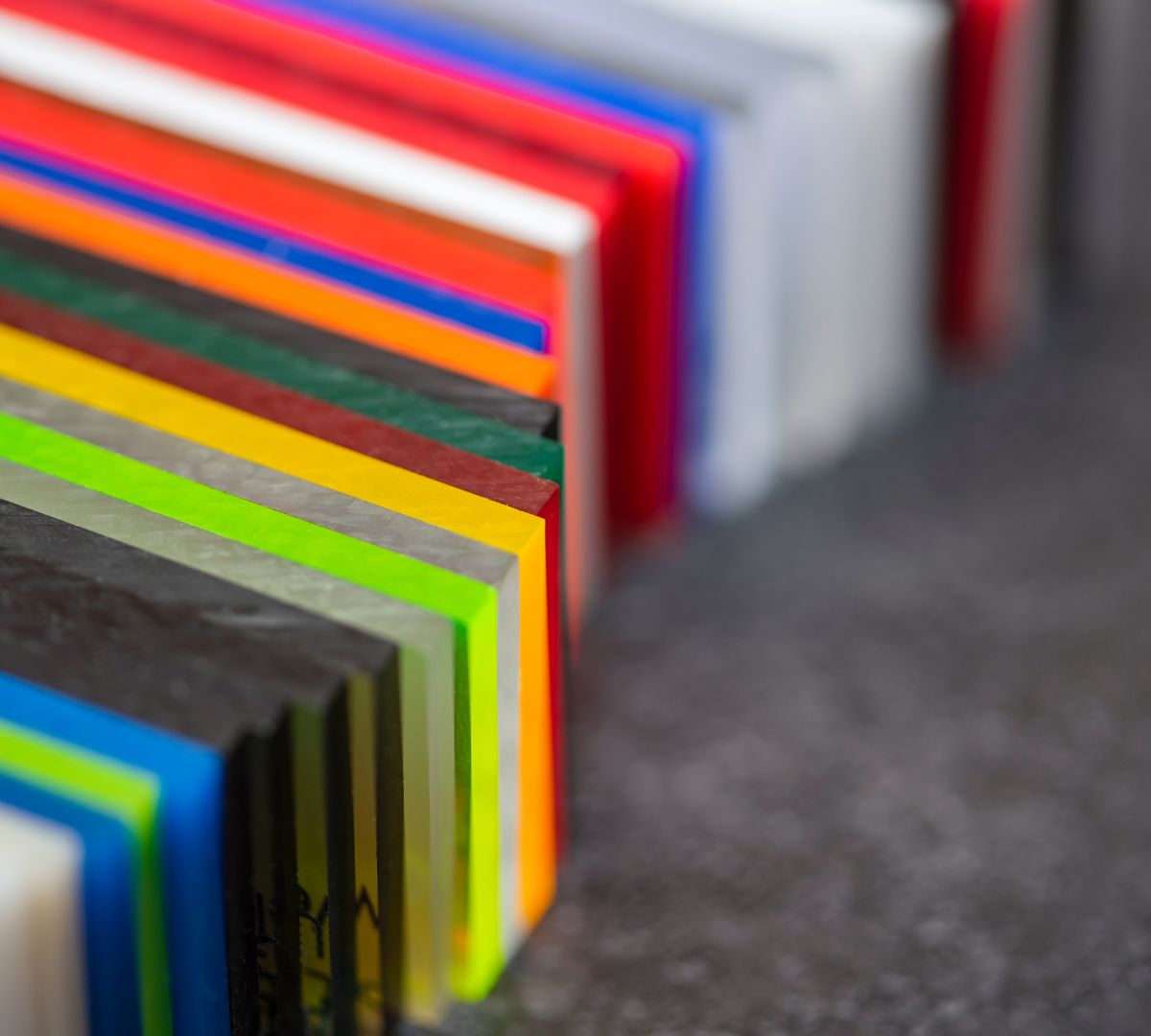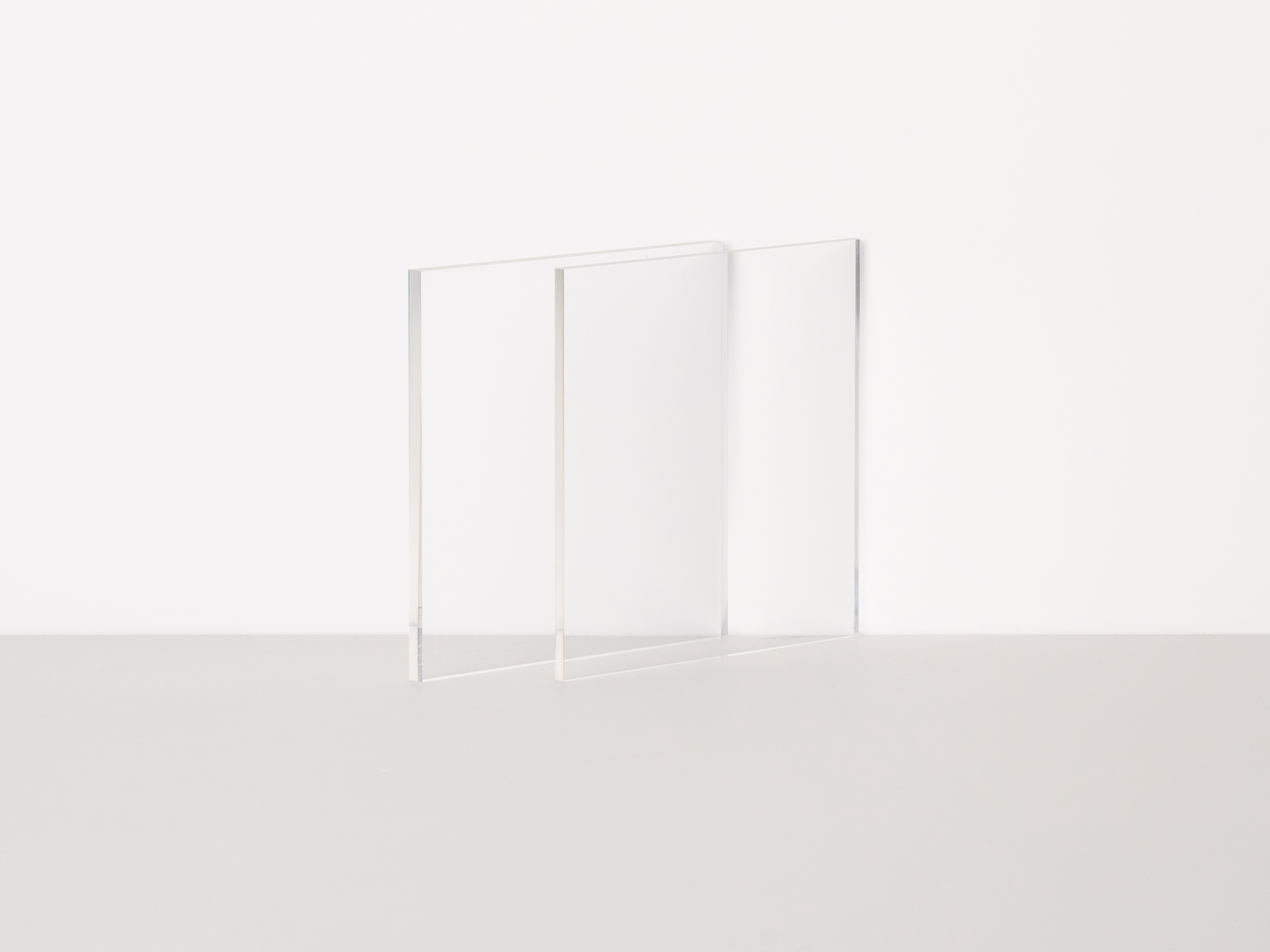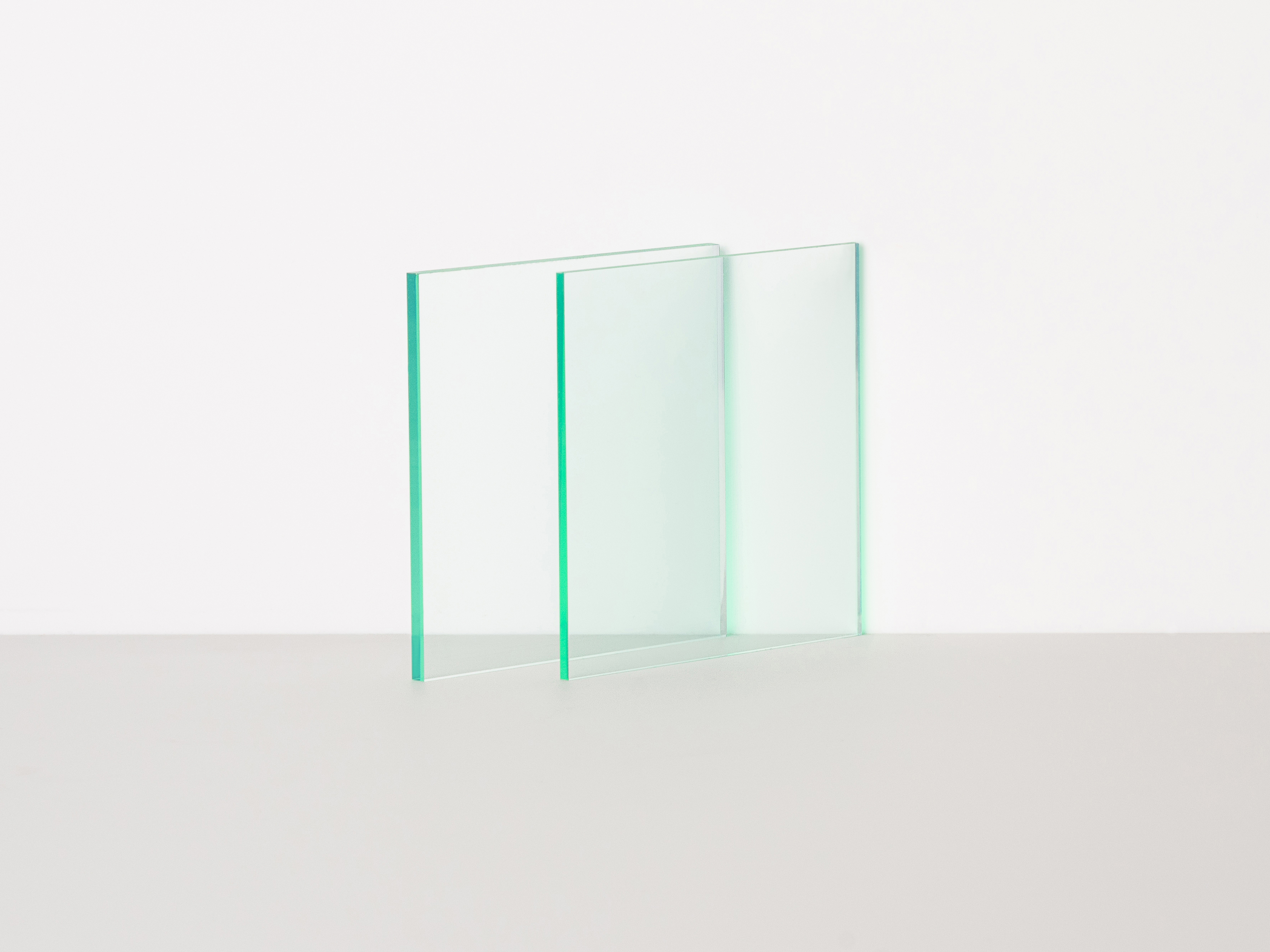Cast Acrylic vs. Extruded Acrylic: A comprehensive comparison
Published on: 16/01/2024

If you’re in the market for cut to size plastic, you might be questioning the type of Acrylic that will work best for you in your home or commercial project. Whilst it’s great to have so many options, such as Cast Acrylic, Extruded Acrylic, Rod, Disc and Block, it can also be overwhelming to weigh up all the advantages and disadvantages of each type of Acrylic material.
Luckily, there’s not just one answer for every project, which gives you the freedom to discover the available options, ask questions, and finally make a choice based on factual research.
Within this article, we intend to provide a comprehensive comparison of Cast Acrylic and Extruded Acrylic so that choosing the right material for your project is easier for you. You can expect to learn:
- The manufacturing process
- The advantages and characteristics of Cast Acrylic
- The advantages and characteristics of Extruded Acrylic
- Colours, finishes and textures
- Which applications are best suited to the use of Cast or Extruded Acrylic
Cast and Extruded Acrylic: A brief introduction
Acrylic sheet is a thermoplastic material also known as Perspex® and Plexiglas® - which are both popular manufacturer brand names.
PERSPEX® Cast Acrylic sheets have been manufactured in the UK since 1933. Simply Plastics is one of the UK’s leading approved PERSPEX® stockists and fabricators, and at last count we held the largest range of Acrylic sheet materials available online in the UK.
Acrylic is available in a choice of two material types - Cast or Extruded.
Cast acrylic is regarded as a better-quality material and is manufactured in smaller batches. Extruded has historically been less expensive, and manufactured in longer production cycles.
Acrylic is not the same as Polycarbonate. You can read more about the advantages, disadvantages, and characteristics of this strong plastic sheeting material in our Ultimate Guide to Polycarbonate.
Cast vs. Extruded: The Manufacturing Process
The manufacturing process of Cast Acrylic and Extruded Acrylic is quite different, and result in quite different mechanical properties.
Cast Acrylic Manufacturing Process
In the case of Cast Acrylic there are actually two manufacturing processes, batch cell and continuous cast – in this article we’ll be covering batch cell which is the most commonly used process by far.
The first process in the manufacturing of cast acrylic sheet is mixing the raw materials in a vat. This includes:
- Methyl Methacrylate Monomer (Liquid)
- Polymethyl Methacrylate Pellets (solid)
- Optional colourants
The resultant liquid is then poured between two high-quality sheets of glass. The two sheets of glass are sealed around all edges with a gasket to form a mould – the thickness of the gasket, and the volume of liquid poured into the mould determines the thickness of the acrylic sheet to be manufactured.
These moulds are then placed into industrial temperature-controlled ovens and heated – this causes the methyl methacrylate monomer (MMA) to polymerize and form long chains of PMMA molecules, a process called casting, which is where the material gets its name from.
The material, which is now cast acrylic sheet, is slowly cooled in controlled conditions to ensure that any stresses that built up during the casting process are relieved – this prevents the material from becoming brittle.
Cell Cast Acrylic can be produced in relatively small batches compared to that of continuous cast or extruded acrylic. For this reason, it is economically viable to produce cast acrylic in a wide range of colours in small batches.
Extruded Acrylic Manufacturing Process
Whereas Cast Acrylic is, or, can be produced in small batches, Extruded Acrylic sheet is made by extruding acrylic polymer over longer, more economical production runs.
The production process is continuous, as Polymethyl Methacrylate (PMMA) pellets are fed into an extrusion barrel which heats them until they are a molten mass. Increased pressure is then applied to the PMMA liquid forcing it through a die as a molten sheet. The molten sheet is fed to calender rolls, the spacing of which determine the thickness of the sheet and in some cases the surface finish. The continuous band of sheet may then be cut or trimmed into its final size.
As a result of the longer production runs, you won’t find Extruded acrylic sheet in the same extensive range of colours, thicknesses and finishes as the Cast sheet.
Cast Acrylic vs Extruded Acrylic: Advantages & Characteristics
Whether Cast or Extruded, Acrylic is renowned for its exception optical clarity, strength, impact resistance and light weight (compared to glass), in addition to the material’s high gloss finish, scratch resistance, chemical resistance and ease of fabrication and re-polishing.
That said, the DIY’ers, shopfitters, sign makers, exhibition firms, and lighting manufacturers we supply, also consider the following advantages and disadvantages when selecting the right type of Acrylic for their project.
| Advantages of Cast Acrylic | Advantages of Extruded Acrylic |
|
|
More detailed information can be found in the following product data sheets.
Acrylic sheet Colours, Finishes and Textures

Cast Acrylic: Due to its small batch manufacturing process, Cast Acrylic comes in a virtually limitless choice of colours and finishes.
 Clear Cast Acrylic
Clear Cast Acrylic
Not even glass can achieve this level of optical clarity. Its high gloss finish is not only very attractive but also more practically very easy to clean.
 Glass Look Cast Acrylic
Glass Look Cast Acrylic
Glass "Look" cast acrylic sheet has a green tint imitating green-tinted glass. Benefit from the look of real glass with the low cost and high performance of acrylic.
 Frosted Cast Acrylic
Frosted Cast Acrylic
Frosted clear acrylic has a matte finish on both sides produced by a textured, sandblasted style finish. The subtle frosted finish is stunning, use it to create imaginative designs for both interiors and exterior uses.
 Coloured Cast Acrylic
Coloured Cast Acrylic
Premium cast acrylic sheet available in a stunning range of vivid colours to suit all requirements. Use colour without compromising on strength and durability.
Perspex®re 100% Recycled Cast Acrylic
Perspex®re is produced from recycled cast acrylic waste, while still upholding the exceptional qualities of high optical transparency, durability, and UV stability found in virgin PERSPEX® cast acrylic.
Cast Acrylic is also available in flat cut letters, numbers and characters produced from Perspex Cast Acrylic plastic sheet. We offer a range of customisation options, from letter size, font selection and colour choices. Whether you’re looking for traditional or contemporary, elegant or quirky, we have the perfect solution to match your vision.
With an in-house colour library, our technologists can colour match PERSPEX® sheet to a colour palette or pantone reference ready for bespoke production. Contact us to find out more.
Extruded Acrylic: Because of its longer production run, Extruded Acrylic comes in a smaller range of colours and finishes.
Clear Extruded
Clear extruded acrylic sheet is an economical, high-quality material with a narrow thickness tolerance. Its optical clarity is also very good, second only to Clear Cast Acrylic sheet.
Black / White Extruded
The same economical, high-quality acrylic sheet is also available in both black and white colour finishes - excellent thickness tolerance.
Prismatic Extruded
Prismatic Extruded sheet with a textured pattern on one side is a lightweight, translucent material optimised for light transmission and diffusion making it a popular choice for lighting applications.
Anti Glare Extruded
A clear Extruded Acrylic sheet with a slight matte surface finish on one side to reduce glare and reflection. Suitable for use for applications where high lighting levels can cause distracting reflections.
Extruded Acrylic is also available in a range of round and square rods and round tubes, in a range of thicknesses and finishes.
Which applications are best suited to Cast or Extruded Acrylic?
When deciding whether Cast or Extruded Acrylic is best for your project it’s worth considering the specific application and desired finish you hope to achieve. The table below provides some examples of the most suitable type of acrylic sheet to use for specific applications.
| Cast Acrylic | Extruded Acrylic | |
| Application |
|
|
In our experience, whilst some projects/applications will require specific characteristics of either Cast or Extruded Acrylic, in most cases the choice can be made based on either colour, thickness or cost, as below:
- Clear or Colour: Extruded acrylic is generally only manufactured in clear, black and white and therefore if there is a requirement for any other colour, Cast Acrylic is the only choice.
- Thickness: Cast acrylic is commonly manufactured in thicknesses up to 100mm whereas extruded is generally available in a maximum thickness of 20mm (Simply Plastics stock up to 50mm in Cast and 10mm in Extruded).
- Cost: Extruded is marginally cheaper and therefore any requirement for a large quantity of sheets/panels, where the benefits of cast acrylic are not important, is likely to be more cost effective produced in Extruded acrylic.
Final Thoughts on Cast vs. Extruded Acrylic
So, when it comes to Cast vs. Extruded Acrylic, which should you choose? Truthfully, both are great options — it just depends on your individual needs.
Ask yourself these questions as a good starting point:
- How much money am I comfortable spending on Acrylic sheet?
- How important to me is using recycled materials?
- Will the Acrylic be in an outdoor environment?
- Do I want a bright, vibrant colour? Or metallic finish?
- Will the Acrylic come into contact with chemicals?
At Simply Plastics, we stock one of the UK’s widest ranges of Cast and Extruded Acrylic sheet, block, rods, tubes, and discs and - as an approved Perspex® fabricator – we cut, route, polish, line bend and engrave vast quantities of the material.
To learn more or to ask questions about selecting an Acrylic sheet type, contact us today to talk with one of our experienced plastic sheet specialists.
Frequently asked questions
Acrylic sheet can be cut using a circular saw, a jigsaw or any type of saw with a fine tooth blade. We recommend laying the acrylic flat on a firm surface, such as a workbench, and clamping it down before cutting. If you are using clamps to hold the material down, we suggest placing wood between the clamps and acrylic sheet to prevent any damage to the surface of the acrylic. Manufacturer safety precautions should always be followed when using any type of saw. Please read our "how to cut acrylic sheets" blog post for more detailed information.
Acrylic should not be cleaned using chemical cleaners because they can cause damage to the acrylic. We recommend cleaning acrylic sheet with warm soapy water and a soft cloth. There are various acrylic cleaners and polishers available which we can provide that keep acrylic looking like brand new.
The Perspex brand has become synonymous with the manufacture of the highest grade acrylic available. It's clear Perspex sheet transmits 92% of all visible light (unmatched by any other manufacturer), is internationally recognised as a safety glazing material meeting the requirements of ANSI Z.97 and BS 6262, offers a ten year weathering guarantee and is manufactured right here in the UK. Perspex also boasts market leading environmental credentials having committed to meeting a detailed set of environmental targets by 2020.
Perspex is also very well known for the wide range of materials and colours it offers which is again unmatched by any other acrylic manufacturer. To the best of our knowledge, we stock and supply the widest range of Perspex colours in the UK including clear cut to size acrylic, high gloss coloured acrylic, frosted, fluorescent, matte effect naturals, metallic, tinted and their latest offering - the sweet pastels range. All of these materials are available cut to size and ready for application.

 25 Colours
25 Colours